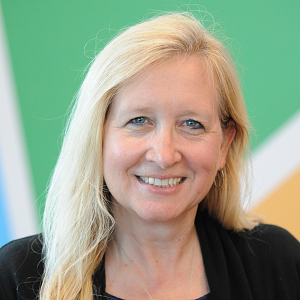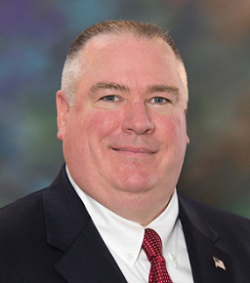
Just as the invention of the airplane transformed transportation around the world, True Sky Federal Credit Union is transforming financial services in Oklahoma City.
Founded in 1946 by eight coworkers at the Civil Aeronautics Administration, today True Sky ($918.1M,
Oklahoma City, OK) has a multiple common bond charter under which it serves 57,000 members across 16 branches, including a new state-of-the art technology branch, and, according to the credit union, the largest fleet of ITMs in the state.
The credit union’s assets have increased 44% in the past four years, and its branch network has nearly doubled. But even as True Sky nears $1 billion in assets, it isn’t after growth for growth’s sake.
“We are trying to transform our credit union into a technology company with purpose,” says Julie Gamblin, True Sky’s chief administrative officer. “We’re trying to be more innovative. We have to change with the times.”
Change. Grow. Transform.
To accommodate changes in technology, member expectations, market, and more, True Sky launched a transformation team — dubbed Change. Grow. Transform. — three years ago after converting from a core processor it had been on for four decades.
Following a round of employee focus groups, True Sky leaders determined a dedicated team would best help the credit union manage change. In the beginning, the team served as a source of positive reinforcement during the core conversion, ensuring effective communication among team members, and distributing thank you notes and treats to boost morale. Today, the team fulfills a larger, albeit similar, purpose.
Transformation team members act as a conduit, soliciting feedback from colleagues, as well as sharing information to help employees better understand the “why” behind changes occurring at the cooperative.
“The thing about change is, it’s never going to stop,” Gamblin says. “It is happening faster and faster. This
transformation team helps us be better at change than we would be without it.”
The team pulls together volunteers representing departments from across the organization — including the loan department, contact center, fraud, and operations support, as well as a few different branch locations.
“We try to have well-balanced representation of the whole credit union so we can get feedback from every area,” Gamblin says.
Importantly, senior leadership does not hold a seat on the transformation team. In fact, aside from True Sky’s HR director — who runs the meetings and determines agenda items — the credit union tries to avoid placing managers on the transformative team altogether.
Best Practice: Power To The People True Sky leaders work to ensure the communication and employee experience team has a broad mix of management and non-management staff, with an emphasis on departmental diversity. And if a team member gets promoted, that person is not asked to step down.
Gamblin says the focus on peer-to-peer communication is an essential success factor. Not only is it more effective than top-down messaging when it comes to opening lines of communication, he notes, it also encourages employees to speak their minds.
Two-way communication is also important. Sometimes colleagues drive the conversation; sometimes transformation team members ask colleagues for feedback on a specific topic. For a recent training session, team members asked around to find out what others would like to enhance inside the organization and what they envisioned the culture looking like in the future.
Of course, it’s important to act on employee feedback when possible.
“That helps culture because they see their suggestions can make a difference,” Gamblin says.
Best Practice: Transparency Is Key True Sky acknowledges employee feedback and thanks them for their engagement. It’s also transparent when it can’t address a topic — or chooses not to.
For example, at the behest of the transformation team, True Sky now distributes a newsletter to keep employees apprised of the goings on across the organization. And when the credit union merged with Central Oklahoma FCU in 2022, the transformation team served as ambassadors with employees from the smaller cooperative, even adding a spot on the team for a Central Oklahoma employee.
Overall, Gamblin and True Sky are pleased with the concept and results of the transformation team. Employees are aware of change and involved in a companywide conversation, and True Sky has a pulse on the attitude of its workforce and the pain points employees face.
“There could come a day when we want to try something different or this isn’t working anymore,” Gamblin says. “I don’t know. But so far, we’ve been happy with it.”
Crafting A Career Flight Plan
Growth and transformation at True Sky would mean nothing if it didn’t translate to growth and transformation for employees.

“We’re all about giving employees opportunity,” says Sean Cahill, True Sky’s CEO.
To help employees decide where they want to be, typically in three years or more, and how to get there, True Sky encourages them to craft an individual development plan (IDP). Importantly, employees own their own career flight plans and participate in the program on a 100% volunteer basis.
“We encourage it and want them to want to do it,” Gamblin says. “If you make people do it, it loses its effectiveness.”
According to Gamblin, the largest hurdle employees typically face is simply getting started. Staff worry about setting the wrong goal or action step. But that doesn’t matter, Gamblin says, because these are personalized plans with no right or wrong answer.
Best Practice: Put Pen To Paper Whether on a physical piece of paper or in a computer, naming goals and crafting a roadmap helps True Sky employees identify success and work toward achieving it.
To help employees take those first steps — and continue to work their plan — True Sky offers templates and workshops to help employees gauge current performance as well as conduct their own research on potential training, experience, or skills needed. It also offers formal assistance before all-employee training days.
Employees are encouraged to talk with their supervisors if they are interested in being on an IDP. Gamblin also makes herself available to mentor employees, offering guidance, inquiring about where they are in their plan, and discussing potential barriers.
Management-level support doesn’t just come in the form of mentorship or morale boosting, though. Leaders set examples through their own participation. When he became CEO, Cahill challenged the senior team to seek professional development and certification opportunities. Gamblin — as well as True Sky’s chief lending officer, vice president of real estate lending, and chief information officer — all are or were on IDPs. Other leaders are working on plans, too.
“Our director of HR just got back from CUDE [credit union development educator] school,” Gamblin says. “That was on her IDP. It took her three years to get there. She’s so excited about it.”
Working plans and accomplishing goals offer personal achievement as well as professional opportunity. According to Gamblin, employees who can show they’ve worked a development plan and took tangible steps toward achieving a goal have a leg up when it’s time to determine promotions or fill vacancies.
“We focus on developing our talent from within,” Gamblin says. “We’ve promoted employees who have gone through development plans. That’s impactful because employees see this works.”
Don’t Miss Out! Callahan’s quarterly Credit Union Strategy & Performance is available for download in the Callahan Client portal today. Not a client? Learn how you can gain access to our award-winning publications, intuitive benchmarking tools, collaborative networks, and more.